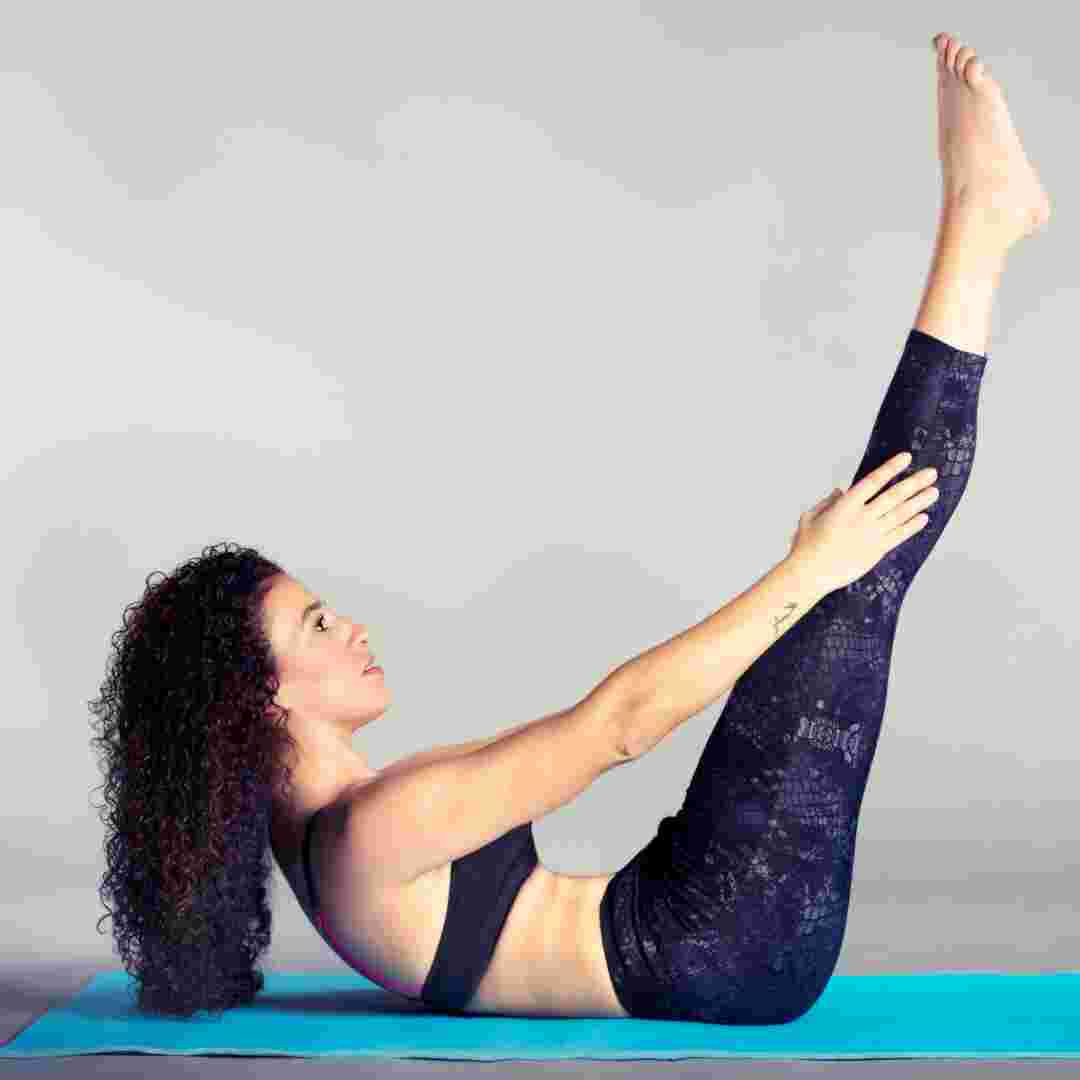Table of Contents
Introduction
Benefits of Hot Pilates for Weight Loss
Hot or traditional Pilates: Which Is Better?
Prepare for Your First Hot Pilates Class
Q&A
Conclusion
"The ultimate fusion of fitness and mindfulness transforms your body and mind."
Introduction
Hot Pilates adds heat to traditional Pilates techniques. The practise is usually done in a 95-100-degree room to improve flexibility, circulation, and detoxification through sweating. Hot Pilates sessions use low-impact routines to strengthen core, posture, and muscles. Heat increases heart rate and metabolism, making it a terrific workout for burning calories and improving fitness.
Benefits of Hot Pilates for Weight Loss
Hot Pilates, a newer activity, has become popular. It combines Pilates and HIIT in a warm room. Hot Pilates classes are usually 95–105 degrees Fahrenheit, making the workout more strenuous. Hot Pilates has several benefits, but weight loss is the biggest.
Hot Pilates burns calories and loses weight well. High-intensity interval training raises heart rate and metabolism, burning more calories. Additionally, room heat might stimulate perspiration output, aiding weight reduction. Sweating eliminates toxins and water weight, making you feel lighter and more energised.
Hot Pilates for weight loss also tones and strengthens muscles. A heated Pilates session targets the core, glutes, and legs with particular exercises. Performing these workouts in a hot area increases intensity and challenges your muscles. This can improve body composition and weight loss by increasing muscle tone and definition.
Weight loss requires cardiovascular health, which hot Pilates can aid. High-intensity interval exercise increases muscle oxygenation and blood flow, improving heart health. This can boost endurance and stamina, helping you workout better and burn more calories. Additionally, room heat helps enhance circulation, which can benefit cardiovascular health.
Hot Pilates improves mental wellness and physical fitness, which can aid weight loss. Relaxation and stress reduction from room heat can boost mood and minimise emotional eating. Pilates activities also enhance mindfulness and eliminate distractions, which can help you stay focused on your weight loss goals.
Overall, hot Pilates helps lose weight well. Its high-intensity interval training, Pilates, and heat can burn calories, tone muscles, improve cardiovascular health, and boost mental wellbeing. Hot Pilates may not be suitable for everyone, especially pregnant women and those with specific medical issues. Always consult a doctor before starting a new workout programme.
In conclusion, hot Pilates is a hard and effective weight loss activity. Its high-intensity interval training, Pilates, and heat can help you lose weight physically and mentally. Hot Pilates may be a fun method to lose weight.
Hot or traditional Pilates: Which Is Better?
Hot or traditional Pilates: Which Is Better?
The popular exercise Pilates has been around for almost a century. Joseph Pilates created it in the early 1900s and it has a global following. Pilates emphasises core strength, flexibility, and balance. The low-impact exercise is ideal for all ages and fitness levels.
In recent years, hot Pilates has evolved. Hot Pilates is done in a heated room at 95–100 degrees Fahrenheit. Heat increases training intensity and provides detoxification and flexibility.
What is hot Pilates, and how does it vary from standard Pilates?
Hot Pilates combines Pilates with HIIT. It combines cardio and strength training with Pilates in a warm room. Heat increases heart rate and metabolism, making workouts more intense and calorie burning.
Traditional Pilates emphasises regulated movements and breathing and is low-impact. It is usually done on a mat or with a reformer or Cadillac. Traditional Pilates improves posture, balance, and core strength.
Which is better, hot or traditional Pilates?
The answer depends on your fitness goals and tastes. Hot Pilates may be preferable for high-intensity workouts that burn calories and improve strength. The heat and cardio in hot Pilates make it more strenuous than standard Pilates.
Traditional Pilates may be better for posture, balance, and core strength. Traditional Pilates targets specific muscle groups and improves body alignment. It's also perfect for low-impact exercisers or individuals with injuries or disabilities that prevent high-intensity workouts.
Hot and conventional Pilates provide several health benefits. Both exercises boost fitness, flexibility, and stress reduction. The goal is to choose the Pilates style that suits you.
Hot and conventional Pilates are both great exercises with many health advantages. Hot Pilates is a cardio and strength-training workout done in a heated room. Traditional Pilates emphasises regulated movements and breathing and is low-impact. The optimal Pilates style depends on your fitness objectives and interests.
Prepare for Your First Hot Pilates Class
Hot Pilates, a newer activity, has become popular. A heated room makes it a high-intensity Pilates workout. The heat is usually 95–100 degrees Fahrenheit, making the workout harder but more fulfilling.
There are a few things you should know before attempting Hot Pilates for the first time. Tips for preparing for your first Hot Pilates class:
1. Hydrate.
Drinking water before a Hot Pilates session is crucial. The heat can increase sweating, so you'll need to drink more. Drink lots of water the day before class and carry a water bottle to the studio.
2. Dress properly.
Hot Pilates is done in a warm room, so wear lightweight, breathable clothes. Avoid bulky, restricting clothing that hinders movement. A towel to wipe sweat during class may also be useful.
3. Arrive early
You should arrive early for your first Hot Pilates class to get to know the studio and teacher. This gives you time to put up your mat and settle in before class.
4. Listen to your body
If you're not used to heated rooms, hot Pilates can be difficult. Listen to your body and take breaks as needed. If you are dizzy, sit down and rest.
5. Be mindful of your breath
Any Pilates activity requires breathing, but Hot Pilates requires it most. Focus on your breath and take deep, calm breaths throughout class to avoid difficulty breathing in the heat.
6. Hydrate after class.
Drink lots of water after Hot Pilates to replace the fluids you lost. To replenish electrolytes, drink sports drinks or coconut water.
In conclusion, Hot Pilates is a hard yet gratifying workout that builds strength, flexibility, and endurance. If you want to experience Hot Pilates for the first time, hydrate, dress appropriately, arrive early, listen to your body, focus on your breath, and keep hydrated after class. With these recommendations, Hot Pilates may be safe and fun.

Q&A
1. What is hot pilates?
Hot pilates mixes pilates with HIIT in a hot atmosphere.
2. What are hot pilates' benefits?
Hot pilates improves cardiovascular health, flexibility, strength, weight reduction, and stress.
3. Is hot pilates for everyone?
Hot pilates may not be suited for pregnant women or those with certain medical issues. Before starting a new workout programme, visit a doctor.
Conclusion
Hot Pilates adds heat to traditional Pilates techniques. Heat from a heated area or infrared heaters improves flexibility, circulation, and detoxification. Hot Pilates sessions use low-impact routines to strengthen the core, improve posture, and tone muscles. Hot Pilates is a demanding and effective workout for fitness and well-being enthusiasts.


